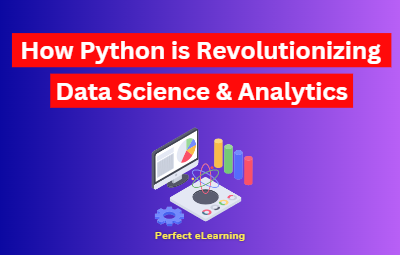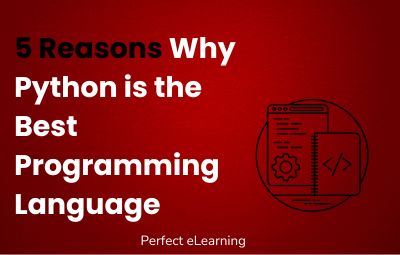

In today's world, where data is everywhere, businesses and organizations are always looking for ways to extract insights from the data they collect. Data science and analytics have become critical components of most businesses, and Python has been at the forefront of this revolution. Python is a high-level, general-purpose programming language that has gained immense popularity in recent years, thanks to its simplicity, flexibility, and the vast number of libraries available for data analysis, machine learning, and visualization. In this article, we'll discuss how Python is revolutionizing data science and analytics.
What is Data Science and Analytics?
Data science and analytics are the fields of study that involve extracting insights and knowledge from data. It involves the use of various tools, techniques, and algorithms to analyze, interpret, and visualize data. The primary goal of data science and analytics is to derive actionable insights from data, which can be used to make informed decisions.
Why is Python the go-to language for Data Science and Analytics?
Python is a popular language for data science and analytics because of its simplicity, ease of use, and the vast number of libraries available. Python's libraries, such as NumPy, Pandas, and Matplotlib, provide efficient and robust tools for data analysis, manipulation, and visualization. Additionally, Python's flexibility allows data scientists and analysts to integrate various tools and frameworks seamlessly.
Python Libraries for Data Science and Analytics
Python has an extensive collection of libraries for data science and analytics. Some of the popular ones include:
1.NumPy: NumPy is a library for numerical computing that provides efficient array operations and mathematical functions.
2.Pandas: Pandas is a library for data manipulation and analysis, providing tools for data cleaning, merging, filtering, and grouping.
3.Matplotlib: Matplotlib is a library for data visualization that provides tools for creating various types of plots, including scatter plots, line plots, and histograms.
4.Scikit-learn: Scikit-learn is a library for machine learning that provides tools for classification, regression, and clustering.’’
Python Frameworks for Data Science and Analytics
Python has several frameworks for data science and analytics. Some of the popular ones include:
1.TensorFlow: TensorFlow is an open-source machine learning framework that provides tools for building and training neural networks.
2.Keras: Keras is a high-level neural network API that allows for fast experimentation and prototyping.
3.PyTorch: PyTorch is an open-source machine learning framework that provides tools for building and training neural networks.
Python Applications in Data Science and Analytics
Python has several applications in data science and analytics. Some of the popular ones include:
1.Predictive modeling: Python is used to build predictive models that can make predictions about future events or trends.
2.Data visualization: Python is used to create interactive visualizations of data, making it easier to interpret and analyze.
3.Natural Language Processing: Python is used for processing and analyzing natural language data, such as text and speech.
4.Image and video processing: Python is used for processing and analyzing images and videos, such as face recognition and object detection.
Advantages of using Python in Data Science and Analytics
Python has several advantages when it comes to data science and analytics:
1.Simplicity and ease of use: Python is a simple and easy-to-learn language, making it accessible to both beginners and experts.
2.Large community support: Python has a large and active community of developers, providing a vast range of libraries, frameworks, and resources
3.Fast prototyping: Python's flexibility allows for quick prototyping and experimentation, enabling data scientists and analysts to iterate and refine their models rapidly.
4.High-performance computing: Python can leverage various high-performance computing techniques, such as parallel processing and distributed computing.
Challenges of using Python in Data Science and Analytics
While Python is a popular choice for data science and analytics, it does have some challenges:
1.Scalability: Python can be slower than other languages when dealing with large datasets, making it challenging to scale to massive data volumes.
2.Memory management: Python's memory management can sometimes lead to memory leaks and other performance issues.
3.Lack of standardization: Python's lack of standardization can sometimes lead to compatibility issues when working with different libraries and frameworks.
The Future of Python in Data Science and Analytics
Python's popularity in data science and analytics shows no signs of slowing down. With the growth of machine learning and artificial intelligence, Python's flexibility and ease of use make it an ideal choice for creating complex models and visualizations. Additionally, Python's active community of developers continues to develop new libraries and frameworks, further extending its capabilities.
Conclusion
Python has become the go-to language for data science and analytics, thanks to its simplicity, flexibility, and the vast number of libraries and frameworks available. Python's popularity shows no signs of slowing down, and its active community of developers continues to push the boundaries of what's possible in data analysis, machine learning, and visualization.
FREQUENTLY ASKED QUESTION (FAQs)
Q1. What is Python?
A: Python is a high-level, general-purpose programming language that is popular in data science and analytics.
Q2. What are some popular Python libraries for data science and analytics?
A. Some popular Python libraries for data science and analytics include NumPy, Pandas, and Matplotlib.
Q3. What are some popular Python frameworks for data science and analytics?
A. Some popular Python frameworks for data science and analytics include TensorFlow, Keras, and PyTorch.
Q4. What are the advantages of using Python in data science and analytics?
A. Python's advantages in data science and analytics include simplicity, community support, fast prototyping, and high-performance computing.
Perfect eLearning is a tech-enabled education platform that provides IT courses with 100% Internship and Placement support. Perfect eLearning provides both Online classes and Offline classes only in Faridabad.
It provides a wide range of courses in areas such as Artificial Intelligence, Cloud Computing, Data Science, Digital Marketing, Full Stack Web Development, Block Chain, Data Analytics, and Mobile Application Development. Perfect eLearning, with its cutting-edge technology and expert instructors from Adobe, Microsoft, PWC, Google, Amazon, Flipkart, Nestle and Info edge is the perfect place to start your IT education.
Perfect eLearning provides the training and support you need to succeed in today's fast-paced and constantly evolving tech industry, whether you're just starting out or looking to expand your skill set.
There's something here for everyone. Perfect eLearning provides the best online courses as well as complete internship and placement assistance.
Keep Learning, Keep Growing.
If you are confused and need Guidance over choosing the right programming language or right career in the tech industry, you can schedule a free counselling session with Perfect eLearning experts.


